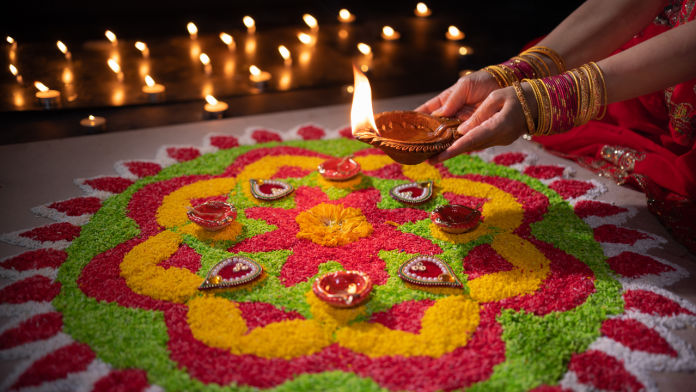Diwali, the festival of lights, embodies much more than just the celebration of light over darkness or good over evil. It is the heartbeat of family traditions, a period when generations come together to rediscover bonds that might have loosened with time. At its core, Diwali seamlessly weaves the spiritual, social, and celebratory into a kaleidoscope of customs and emotions.
For many, it is also a time of reconciliation—an annual reminder to set aside differences. And in a masterstroke of tradition, the festival places Goddess Lakshmi at its centre, nudging even the most disjointed of families to come together in the hope of inviting wealth, harmony, and prosperity into their homes. As I look back at my childhood memories of Diwali, I cannot help but marvel at how different things were—how intricately every detail mattered and how even the simplest act carried meaning.
Needless to say, there is no better family time and nothing bonds a family together like wealth and prosperity.
Preparations in Full Swing
As a child, I would visit my grandparents home in Central India, preparations for Diwali would start a month-and-a-half in advance. The excitement was palpable, and every member of the household had a role to play. Clothes for the family were sent to the tailor well in advance to ensure everyone had something new to wear for the festivities—a non-negotiable custom. Homes bustled with activity as mothers and grandmothers prepared sweets and namkeens (savouries). A North Indian household, for example, would fill its kitchen with the rich aromas of gujiyas, shakkarpare, besan ke ladoo and mathris. These homemade delights weren’t just for family consumption—they were lovingly packed into dabbaas to be exchanged with friends, neighbours, and extended family.
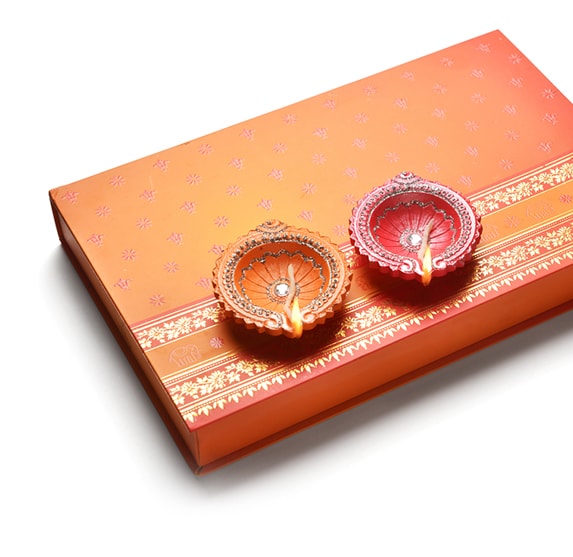
At the same time, the family Panditji (priest) would visit to finalise the auspicious timing for the Lakshmi Puja. His arrival marked the spiritual preparations, which would later culminate in the grand prayer ceremony on Diwali evening.
One of the most delightful pre-Diwali rituals was visiting relatives to pay respects (pranam) and, as a child, gleefully receiving money in return. These outings, though often exhausting, brought families together. Looking back, I realise these little gestures—seeking blessings and offering hospitality—are what made the festival feel so deeply personal. The cleaning tradition emphasises the importance of mindfulness and preparation. It serves as a reminder to clear out not just physical space but also emotional baggage, making way for new beginnings.
The Ram Leela – A Theatrical Tradition
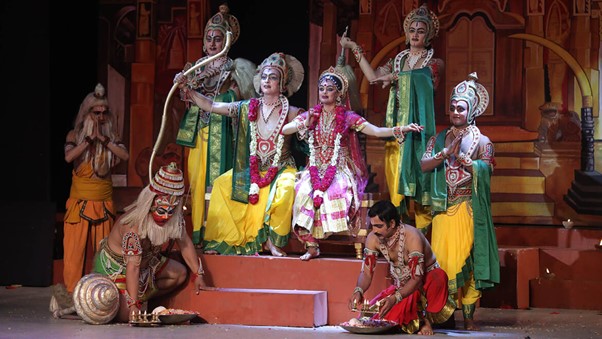
Before Diwali came Dussehra, and with it, the Ram Leela, where groups of men would get together and enact the story of the Ramayana. This community performance of the Ramayana through bhajans was an annual highlight. Every neighbourhood (mohalla) staged its own version, with local enthusiasts playing the roles of Rama, Sita, Hanuman, and even Ravana. The stage, costumes, and props were often funded by wealthy patrons of the community, and while the performances themselves were captivating, the stories that emerged offstage were equally entertaining—actors getting into scuffles, forgetting their lines, or occasionally drinking a little too much before showtime.
The Ram Leela wasn’t just an enactment of a sacred text; it was a cultural phenomenon. Watching Rama’s eventual triumph over Ravana and the symbolic burning of effigies reminded everyone of the eternal battle between good and evil, a perfect prelude to Diwali.
Sadly, this tradition is fading. Today’s Ram Leelas are often overshadowed by political speeches or marred by bureaucracy, and their once-vibrant cultural significance is slowly being lost.
The Diwali Mela – A Shopper’s Paradise
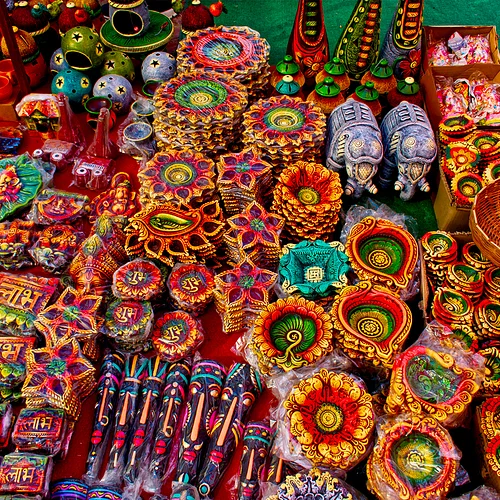
In my younger days, Diwali melas were an integral part of the festive season. Town squares or large fields transformed into bustling markets where artisans displayed their handcrafted wares—rugs, lanterns, toys, and intricate torans (door hangings). The allure of these markets – many subsidised by the local government – wasn’t just in the shopping but in the atmosphere: the smell of street food wafting through the air, children squealing with delight on makeshift Ferris wheels, and cultural performances bringing communities together.
One of my fondest memories is of buying clay diyas shaped like little works of art, each ready to be lit and placed around the house. These melas brought the spirit of Diwali alive, reminding everyone of the beauty of simplicity and the joy of togetherness.
In Mumbai city, there use to be a Dussehra Mela at August Kranti Maidan, which no longer exists.
Greeting Cards and Personal Touches

Diwali greeting cards hold a special place in my heart. My parents encouraged me to make handmade cards for relatives, but we also purchased beautifully illustrated cards from the market. Writing heartfelt notes, carefully addressing envelopes, and posting them at the neighbourhood post office was a ritual in itself.
Some cards bore images of gods, which created an unspoken dilemma when it came time to dispose of them. These weren’t simply thrown away; instead, they were respectfully immersed in water, ensuring no inadvertent disrespect.
Sadly, this tradition has vanished. Today, WhatsApp forwards and Instagram stories have replaced handwritten cards. While these digital greetings are efficient, they lack the warmth and effort of the cards we once cherished. Some messages are indeed creative, cute and funny, but often they appear mechanical and impersonal. What goes around, comes around and it’s usually a jaded WhatsApp message.
Lighting Diyas and Drawing Rangoli

One Diwali custom that has stood the test of time is the lighting of diyas. Their soft glow creates an atmosphere of serenity and hope, symbolising the victory of light over darkness. In our home, the arrangement of diyas was a carefully planned affair, with each member contributing to the process.
Rangoli designs—elaborate patterns made from coloured powders—adorned the doorstep. These weren’t just decorations; they were acts of devotion, welcoming the gods and good fortune into our homes.
While electric lights and LED candles have gained popularity, nothing compares to the charm of a flickering clay diya. Each one tells a story of resilience, hope, and tradition.
Modern Diwali – A Different Lens
Over the years, Diwali has changed. For many, it is now an opportunity for extravagant parties, complete with gourmet food, alcohol, and competitive games of cards. In cities like Delhi, these Diwali bashes have become status symbols, showcasing wealth and opulence.
Consumerism has also crept in, with Diwali sales dominating the festive season. Shoppers flock to stores and online platforms to buy everything from clothes to electronics. While these sales add a layer of excitement, they also reflect a shift away from the festival’s simpler, more meaningful roots.
The Diwali festivities would start in right earnest with the day of Dhanteras. People believe it is a day to buy gold, silver or steel utensils. Actually, Dhanteras is a tribute to Rishi Dhanvantri, the father of the Ayurveda. The next day was Kali Choudas, we were not allowed to go out of the house after dark for the fear of being harmed by an evil spirit, which were supposed to roam free that night. The evening was spent in making little toys, book covers, kites etc.
The next day would be Diwali and it was mandatory to have a bath (Abhyanga Snan) early in the morning. Breakfast would consist of hot saffron milk, some fresh samosas and halwa. By this time, the Pandit would show up giving directions and making his presence felt. The Diwali lunch was a big event, some of was semi-cooked a day earlier to be ready in time for lunch. There would be a constant stream of visitors and lots of laughter, fun and as kids we would also have to go and visit relatives. There was a proper protocol as to where we would go first, second, third etc. etc. We had to be home by 1.30pm, with hot tandoori rotis eaten topped with white makkhan plus a couple of vegetable curries. Desert would be a Phirni in a large terracotta vessel with silver and gold foil on the surface. It was a house specialty. After lunch, everybody snoozed off and, in the evening, we would set up a shop. It was called a hatti, that is a shop. We have to bathe again, just before the Diwali Pooja, we would open the shop and sell the stuff that we have made or brought from the Mela. It was a way for elders to interact and give us money. At around 8pm, there would be the Lakshmi Pooja, the pandit in his finery directing the evening and all of us in our new clothes. We couldn’t wait for pooja to be over because it was a time for crackers. We would go to the terrace of house and for the next 45 minutes. The entire city would be celebrating. It is impossible to think of Diwali without crackers. Starting from Dhanteras to the night of Diwali was one big celebration.
The Future of Diwali
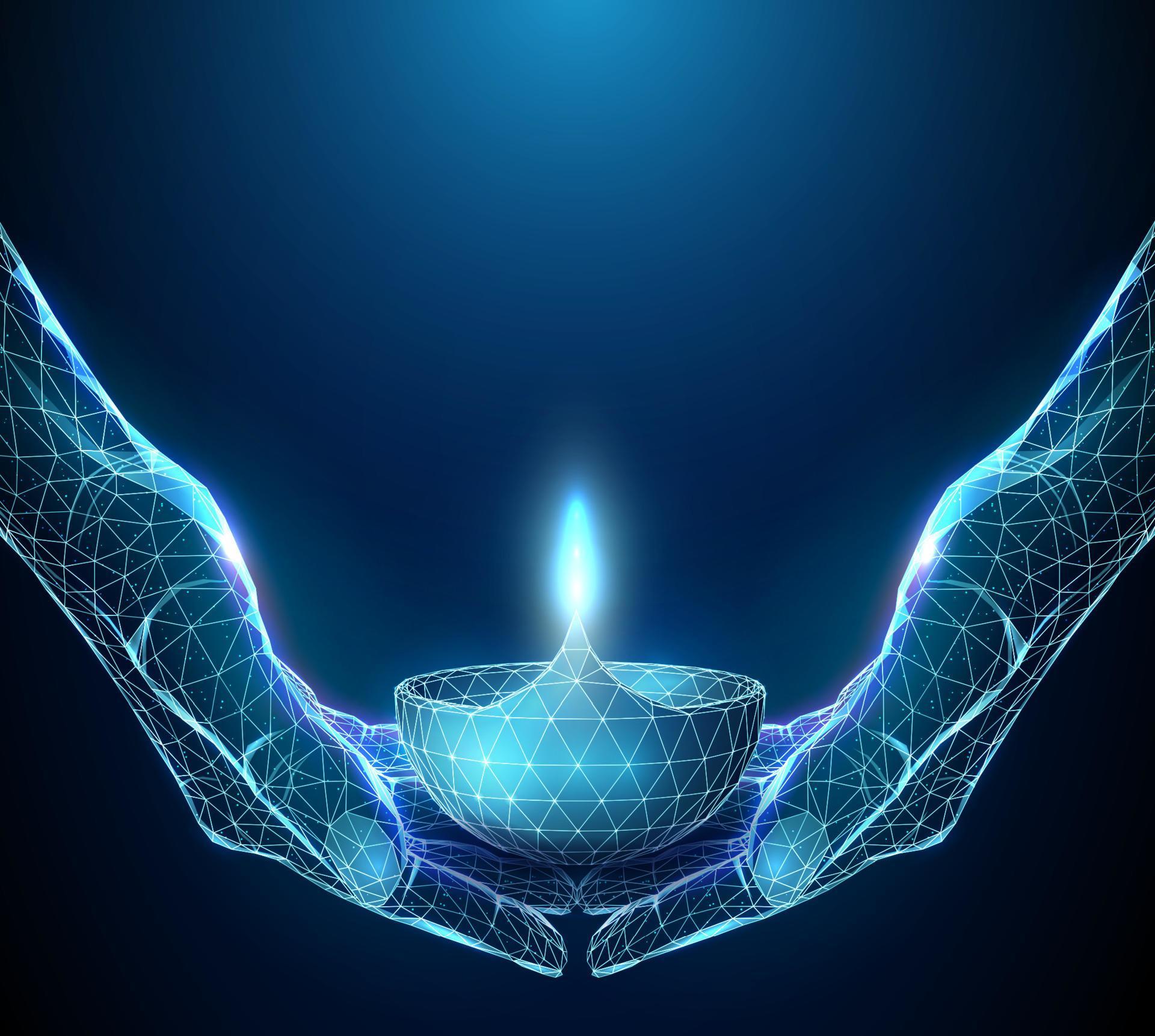
Looking ahead, I wonder what Diwali will look like in the next century. Will traditional diyas and homemade sweets become relics of the past?
Let me take you to beyond with a true story. A cousin called a few years back and said he had sent me Ghevar. I asked my wife whether she had received it, the house help was questioned, I even asked the watchman, whether he has received any mithai box. The answer from everywhere was in the negative. I than called my cousin and said I hadn’t received the Ghevar and he said: Bhaiya, open your WhatsApp. I have sent you an ‘e-ghevar’.
Yet, even as technology evolves, I hope the essence of Diwali remains intact: a festival of light, love, and community that continues to bring families and friends together in celebration.



